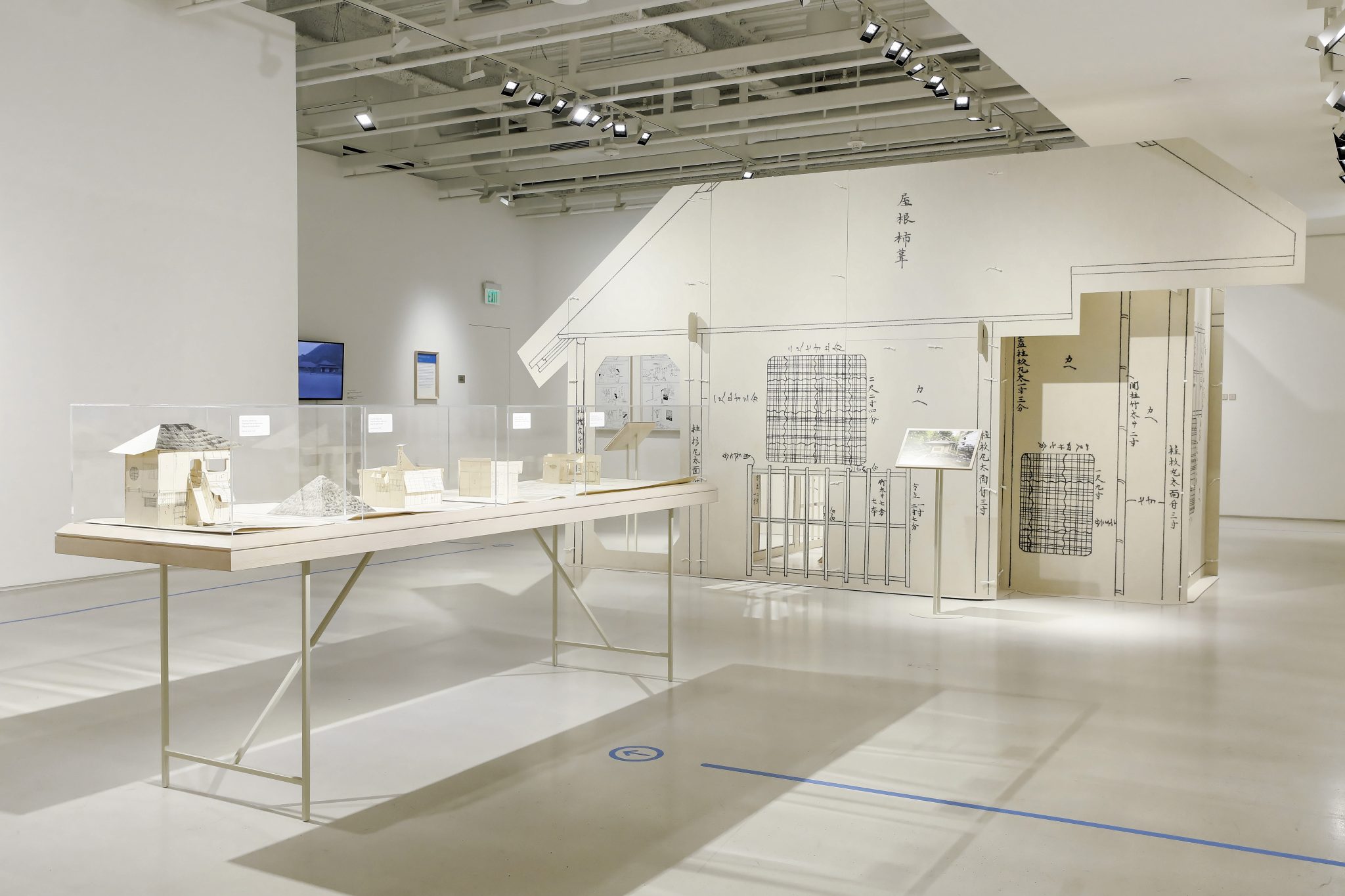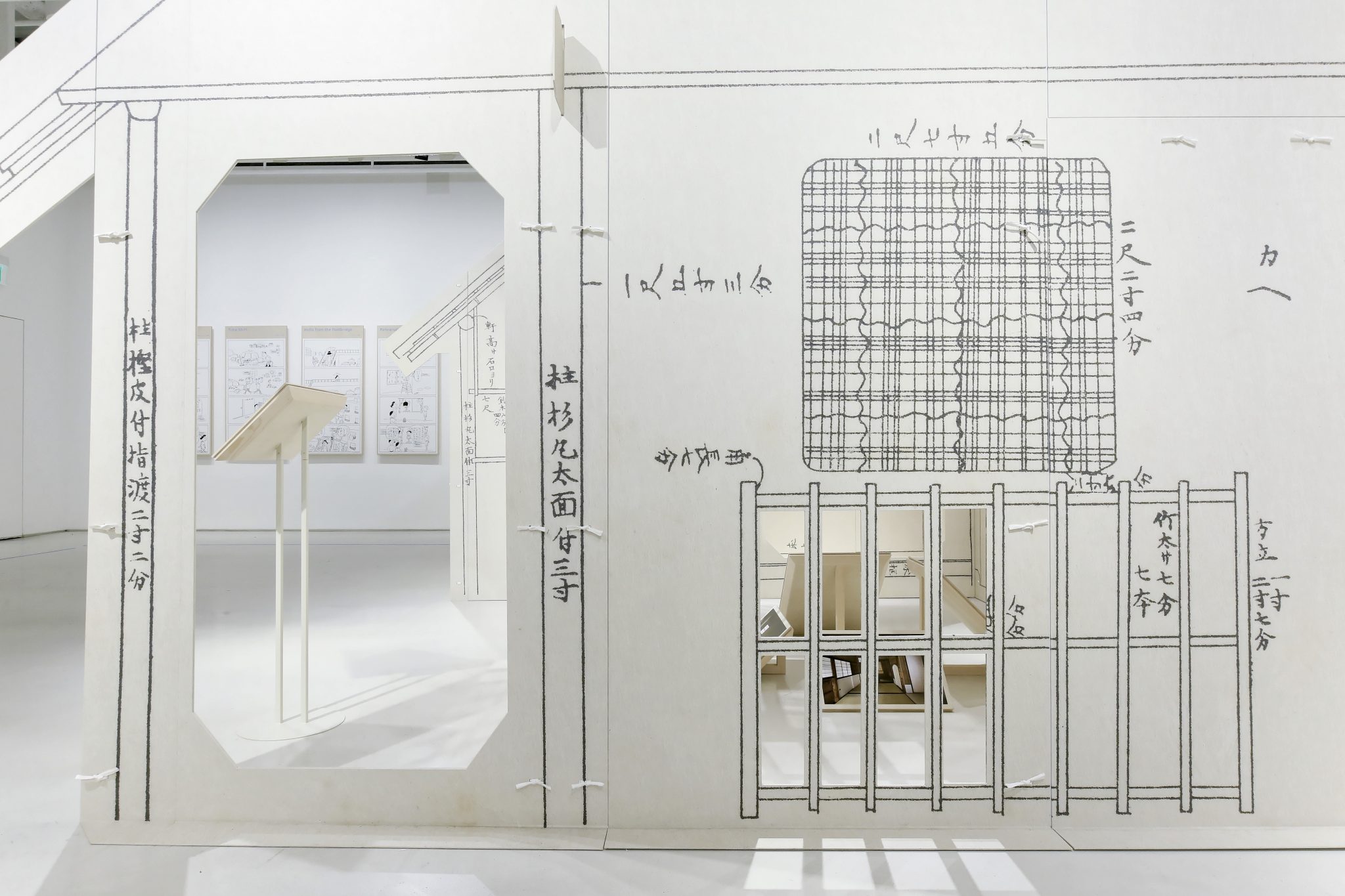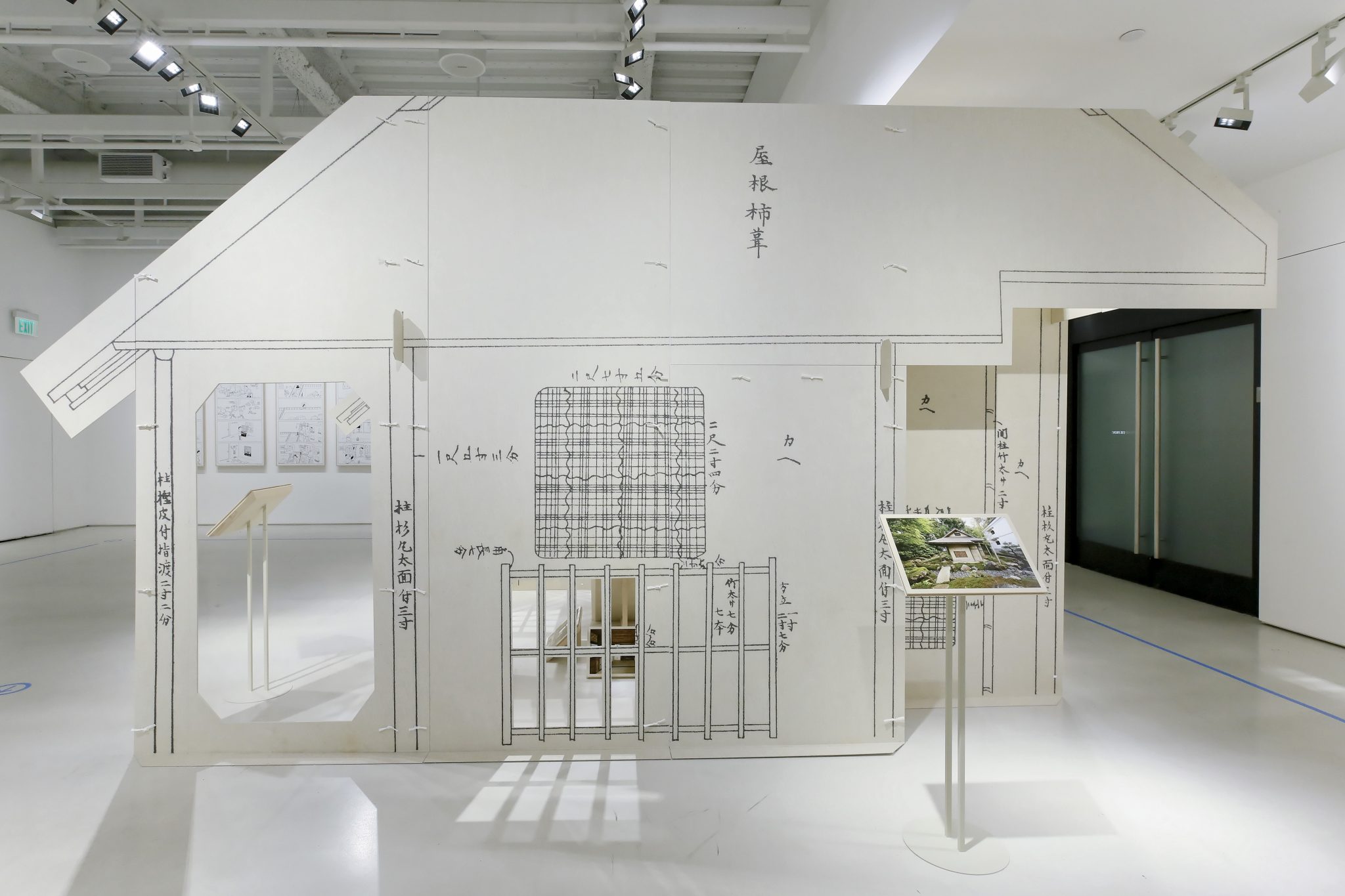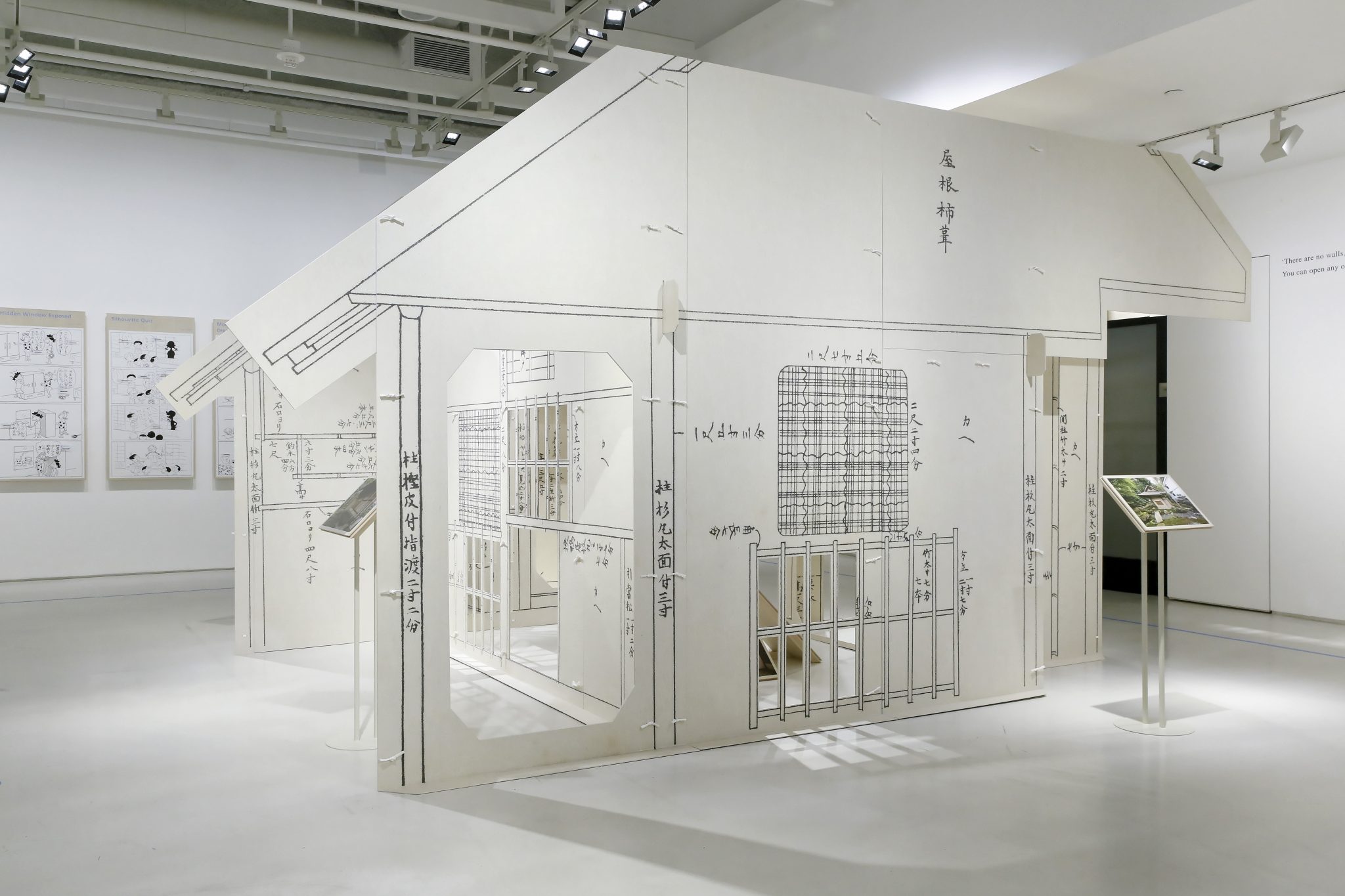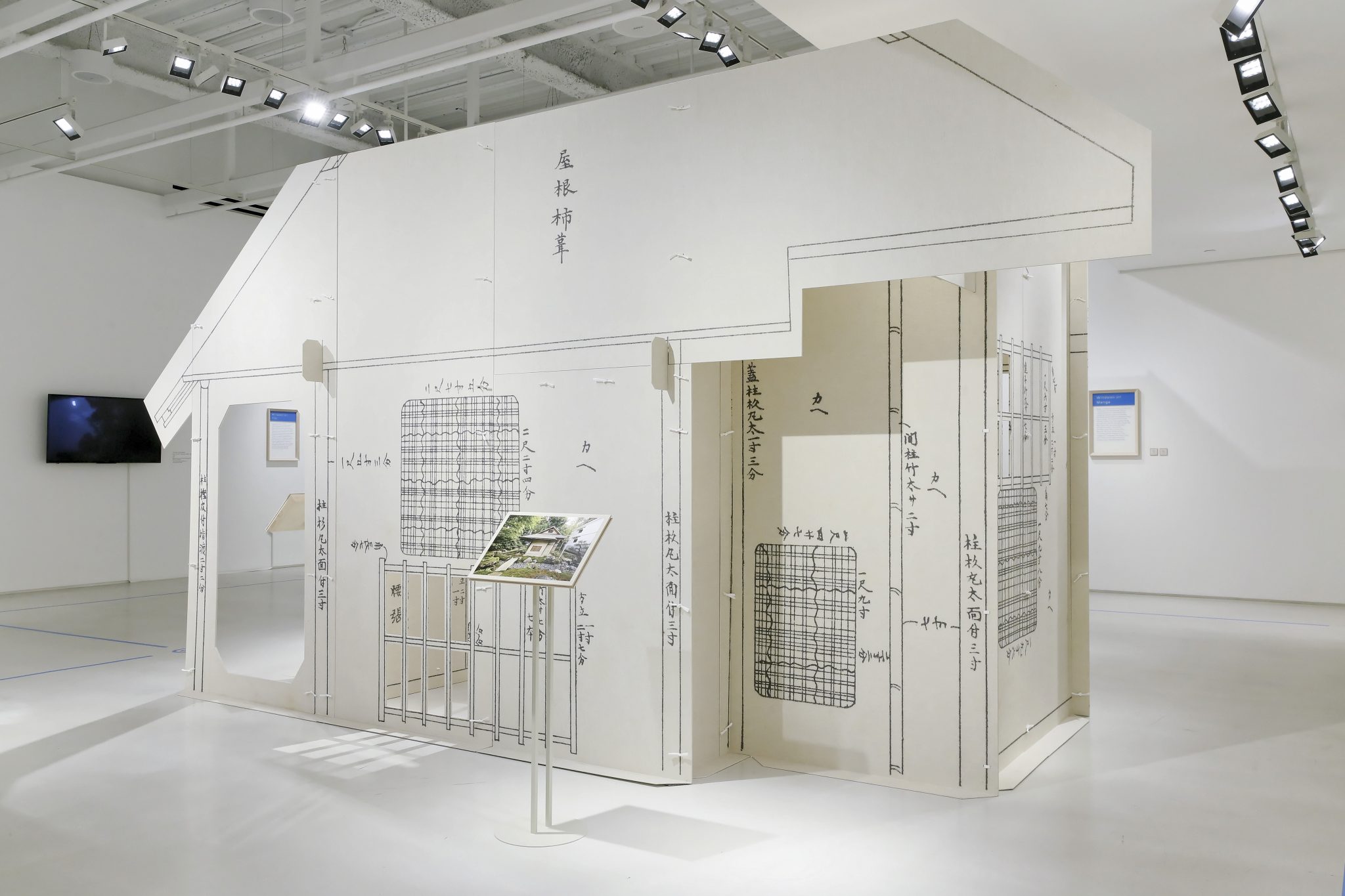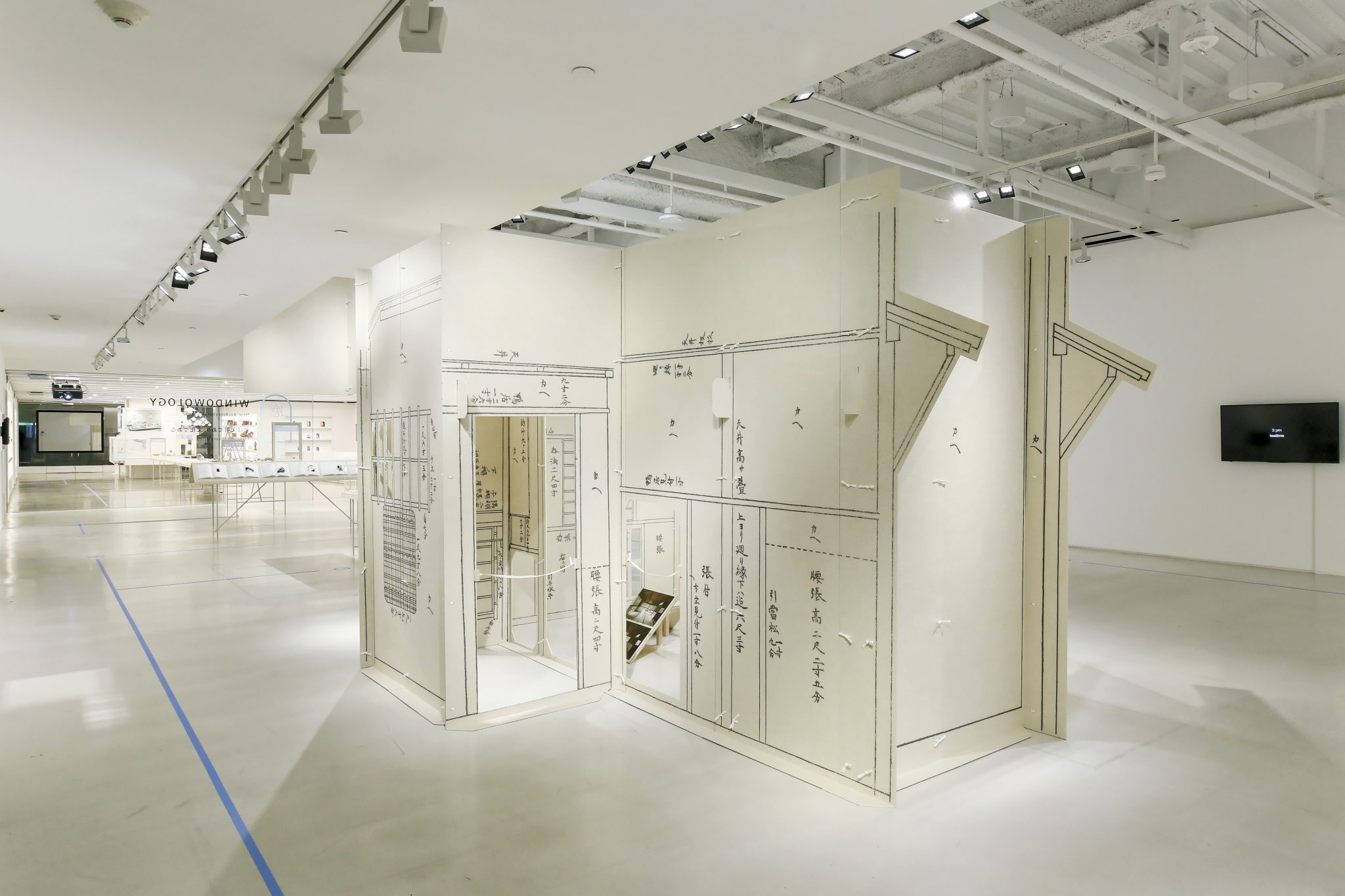Windows on the Teahouse
The Japanese teahouse (chashitsu) is a special architectural structure which features many types of windows in a small space. These include renji-mado (windows made from wooden slats), maru-mado (round windows), tsukiage-mado (hatch skylights) and shitaji-mado (windows made by exposing the lattice framework of the wall). Yōsuitei, which is also known as the Jūsansōnoseki (Thirteen-window sitting room), has the most windows among all existing teahouses. This is a full-scale replica of Yōsuitei created by enlarging an original okoshi-ezu, a fold-up three-dimensional architectural plan made with washi (handmade Japanese paper). These models, which represent the spaces of Japanese teahouses, were utilized by tea masters and carpenters when reviewing and developing designs.
Design: Tezzo Nishizawa Architects + Ken Okamoto Design office
Production: TOKYO STUDIO
Photography: Ota Takumi
Film: qomunelab
Special Assistance: Yōsuitei Preservation Society, Horiguchi Sutemi Archives
